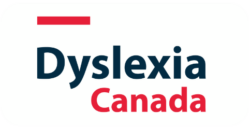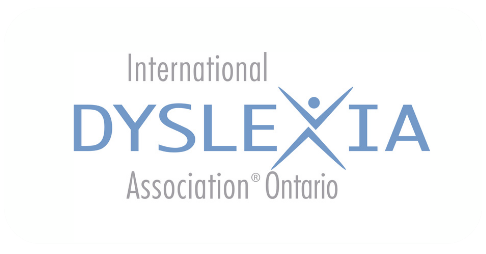Continuum des notions fondamentales de la lecture et de l’écriture
de la 1ʳᵉ à la 4ᵉ année, attente B2
Thèmes
Les connaissances des régularités orthographiques
Lorsque les élèves mettent en application leurs connaissances orthographiques, y compris celles relatives à la loi de position, pour faire un choix orthographique ou prononcer un mot avec précision lors de la lecture de mots.
Les correspondances graphèmes-phonèmes peuvent varier selon le contexte orthographique, c’est-à-dire selon les lettres qui précèdent <ll> entre i et une autre voyelle; <s> = /z/ entre 2 voyelles) ou qui suivent ce graphème (<c>/<g> devant e, i et y; c/g devant a, o, u). L’apprentissage des régularités orthographiques contextuelles les plus fréquentes et les plus constantes guide l’élève quant au choix de phonème lorsqu’elle ou il lit un mot, et quant au choix du graphème le plus approprié pour représenter un phonème donné lorsqu’elle ou il orthographie un mot.
Notre système d’écriture, ou d’orthographe, représente les sons des mots, avec des lettres ou des combinaisons de lettres. L’orthographe du français est plutôt opaque, ce qui signifie qu’il n’y a pas nécessairement de relation univoque entre un son et sa représentation, par exemple, le son /o/ qui peut être écrit avec: o, au, eau, aux, eaux, etc.
Il est important de noter qu’il existe une structure et un ordre pour expliquer ces relations, en particulier lorsqu’on tient compte de la position d’un son dans un mot. Notre langue a une structure claire; les élèves doivent comprendre les règles de la langue pour les aider à lire et à écrire.
Connaissances et habiletés
Annexe A
Voir tous les détails dans ce document: Annexe A. Continuum des notions fondamentales de la lecture et de l’écriture, de la 1ʳᵉ à la 4ᵉ année, attente B2.
Développement
Lorsque les élèves commencent à apprendre à lire et à écrire, la plupart des mots ont une relation prévisible entre les lettres et les sons. Par exemple, les élèves apprennent les sons des consonnes et des voyelles simples (a, i, l, p, t, etc.), puis des digraphes et des trigraphes (ch, au, on, eau, etc.).
Au fur et à mesure que les élèves deviennent plus habiles, nous pouvons leur enseigner qu’il existe parfois plusieurs orthographes pour certains sons. C’est une connaissance importante pour l’orthographe des mots, car les élèves devront choisir entre quelques orthographes différentes. Par exemple, si l’élève écrit le mot <beau>, elle ou il devra choisir entre plusieurs orthographes pour le son /O/.
Nous pouvons également leur apprendre que certaines graphies peuvent avoir plus d’un son, ce qui est important pour la lecture des mots, car elles ou ils peuvent avoir besoin d’essayer différents sons lorsqu’ils prononcent un mot inconnu. Par exemple, si l’élève lit le mot <cerise>, elle ou il devra décider quel son sera approprié pour le <c>, soit le /s/ ou le /k/.
Importance
Pour éviter que les élèves n’aient à mémoriser des mots spécifiques par cœur, il est important de comprendre la structure de notre langue. La compréhension est améliorée par une bonne lecture des mots et la rédaction écrite est améliorée grâce à de solides compétences en orthographe.
En écrivant une lettre pour un son, les élèves ne peuvent pas toujours orthographier correctement. L’orthographe est une tâche analytique qui nécessite un examen minutieux de la classe des mots dans la phrase, de leurs sons et de leur orthographe.
Les régularités orthographiques sont des normes qui s’appliquent généralement à huit mots sur dix. Elles nous permettent de décharger la mémoire. Au lieu d’apprendre en profondeur l’orthographe de plus de 30 000 mots de la langue française, il est plus important d’acquérir et de mettre en pratique quelques règles.
Enseignement
Soyez franc et ouvert avec les élèves au sujet de la structure de la langue. Il est souvent très intéressant pour les élèves de comprendre pourquoi les mots sont orthographiés d’une telle manière. Le fait de souligner aux élèves qu’il existe souvent des régularités qui expliquent le pourquoi de l’orthographe des mots peut les aider à développer un enthousiasme envers la lecture et l’écriture.
Au début de leur apprentissage, les élèves apprennent les régularités orthographiques en appliquant les connaissances acquises grâce à leur « mapping orthographique ». Selon cette théorie, les langues alphabétiques sont des systèmes d’écriture basés sur les phonèmes (sons), pour lesquels la connaissance de la forme, du nom et du son des lettres ainsi que la segmentation phonémique sont essentielles.
Lorsque nous utilisons des stratégies telles que les correspondances phonèmes-graphèmes, nous favorisons le processus mental du « mapping orthographique » (qui est la façon dont notre cerveau stocke les mots). Mémoriser un seul mot peut prendre des centaines de répétitions (selon l’enfant). Mais en développant les compétences fondamentales nécessaires, le « mapping orthographique » des mots ne prend généralement qu’une à quatre répétitions!
Lorsque les élèves épellent, il est utile qu’ils connaissent les orthographes les plus fréquentes pour un son dans une position particulière. Ces orthographes <probables> aident les élèves à décider la façon de représenter un son. Par exemple, <è> est plus fréquent et l’élève écrirait <mè> au lieu de <mais>.
On doit porter attention au développement de la conscience phonémique des élèves lorsqu’on leur enseigne les régularités orthographiques. Lorsque les élèves épellent, encouragez-les à segmenter d’abord un mot pour identifier la position d’un phonème cible dans un mot. Par exemple, si un élève épelle le mot <flambeau>, nous pourrions l’inviter à identifier que le son [ɑ̃] devant un b est toujours épelé avec un <m>.
Évaluation au service de l’apprentissage
« Le but premier de toute évaluation et de la communication du rendement est d’améliorer l’apprentissage de l’élève. »
Faire croître le succès, 2010, p. 6
Diverses sources d’information sur la mise en application des connaissances orthographiques des élèves, y compris le dépistage précoce de la lecture, les évaluations diagnostiques et le suivi des apprentissages, peuvent être utilisées comme évaluation au service de l’apprentissage afin d’offrir un enseignement systématique et explicite fondé sur des données probantes.
En lecture, la connaissance, la compréhension et la mise en application des régularités orthographiques des élèves peuvent être analysées à partir d’un outil de dépistage de la fluidité orale de la lecture. Les outils de diagnostic du décodage peuvent être utilisés pour approfondir la compréhension des régularités orthographiques spécifiques apprises par les élèves et pour planifier les prochains apprentissages.
En ce qui concerne l’écriture, envisagez d’utiliser un inventaire orthographique pour l’évaluation au service de l’apprentissage. Ces outils peuvent généralement être administrés à l’ensemble de la classe à l’aide d’une liste de mots. L’orthographe des élèves est notée à l’aide d’une feuille de route qui permet d’examiner de près leur compréhension des sons, des régularités orthographiques et de la morphologie.

Financé par

Le financement de ces ressources est assuré par le ministère de l'Éducation. Veuillez noter que les opinions exprimées dans ces ressources sont celles d'ONlit et ne reflètent pas nécessairement celles du ministère de l'Éducation.
Financé par

Le financement de ces ressources est assuré par le ministère de l'Éducation. Veuillez noter que les opinions exprimées dans ces ressources sont celles d'ONlit et ne reflètent pas nécessairement celles du ministère de l'Éducation.
© 2023 ONlit. Tous droits réservés.


